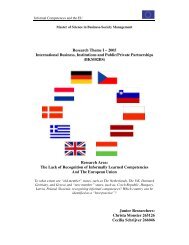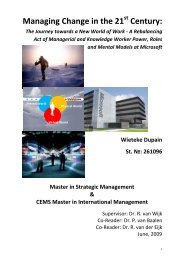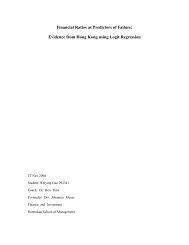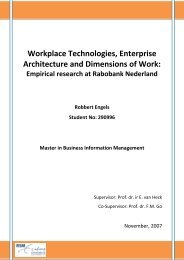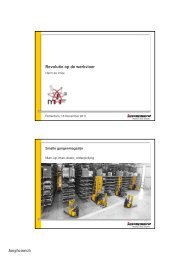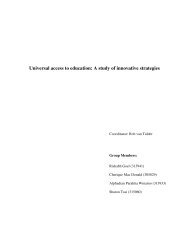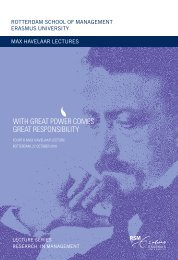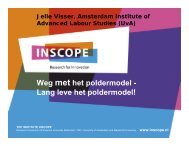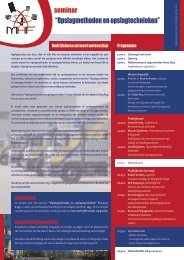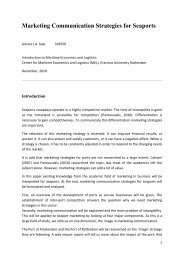here - ERIM - Erasmus Universiteit Rotterdam
here - ERIM - Erasmus Universiteit Rotterdam
here - ERIM - Erasmus Universiteit Rotterdam
Create successful ePaper yourself
Turn your PDF publications into a flip-book with our unique Google optimized e-Paper software.
A validation Study of House of Quality key performance indicators<br />
The present case study focuses on the Dutch labour union De Unie. Recently, De Unie started its<br />
journey to discover new concepts of working. For example; a new building with different features to<br />
facilitate new ways of working was built in the year 2003. Within 2006 De Unie started the first<br />
online labour union in the Netherlands; “the online union” (De Internetvakbond). Labour unions<br />
worldwide are facing a decline in the number of members for almost twenty years now (Greene<br />
2000, Ward 2002, Heery 2004). Problems on recruitment and retention of members are the primary<br />
concern for unions to identify new concepts that adapt to the needs of the changing workforce and<br />
rejuvenate the traditional union. Also in the Netherlands unions are challenged with the above<br />
described decline in the number of members.<br />
In essence a labour union centres on maintaining the delicate balance in the group-individual<br />
member relationship. The latter is shifting as a consequence of two main forces. First, the changing<br />
power balance altering the traditional configurations and relations in the market; second, the growth<br />
of the internet and other information and communication technologies (ICT). The latter accelerate<br />
the velocity of information and business processes and turn the group-individual relationship on its<br />
head, due to the emergence of ICT-enabled individualization.<br />
Fortunately, the leadership of De Unie is aware of the significance of the aforementioned forces and<br />
the urgent need to develop a new union concept that is more responsive to the members’<br />
contemporary needs. It merely started an online union as an experiment to rejuvenate the<br />
organizational concept that would fit to the needs of the “new workforce” and new members.<br />
Hence, understanding members’ needs for individualization and reconciling these with the<br />
requirements of the group is a precondition to the online union’s success. At present, t<strong>here</strong> is a lack<br />
of information regarding members’ identities and motives. Such data is vital to plot an adoption<br />
strategy for the online union. T<strong>here</strong>fore, this research seeks to provide insights about members’<br />
identities and motives in relation to the online union. Moreover, it provides recommendations on<br />
how De Unie can improve its processes to align the online union with the conventional organization,<br />
which is rooted in the co-located form of conducting work, that the majority of members are familiar<br />
and comfortable with.<br />
1.2 Theories of service improvements<br />
In order to translate customer’s requirements into the development process of new products or<br />
services, nowadays different methods exist to control, measure, manage and improve quality in<br />
different areas. One method to measure the quality of a service is the SERVQUAL model of<br />
Parasuraman et al (1985). The model determines the quality of a service by measuring customer’s<br />
expectations and perceptions on different service attributes. A gap exists when the expectation of a<br />
14




